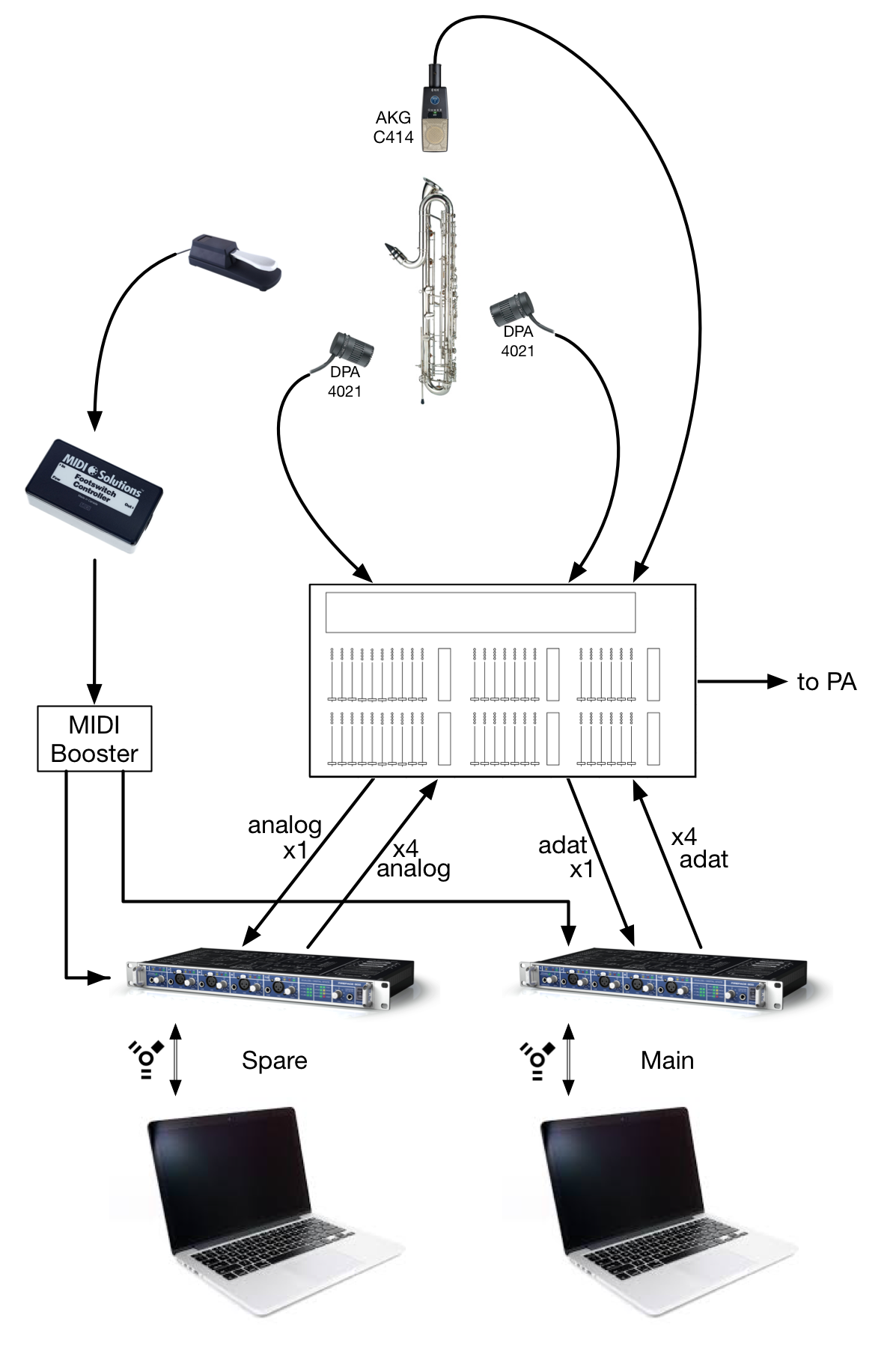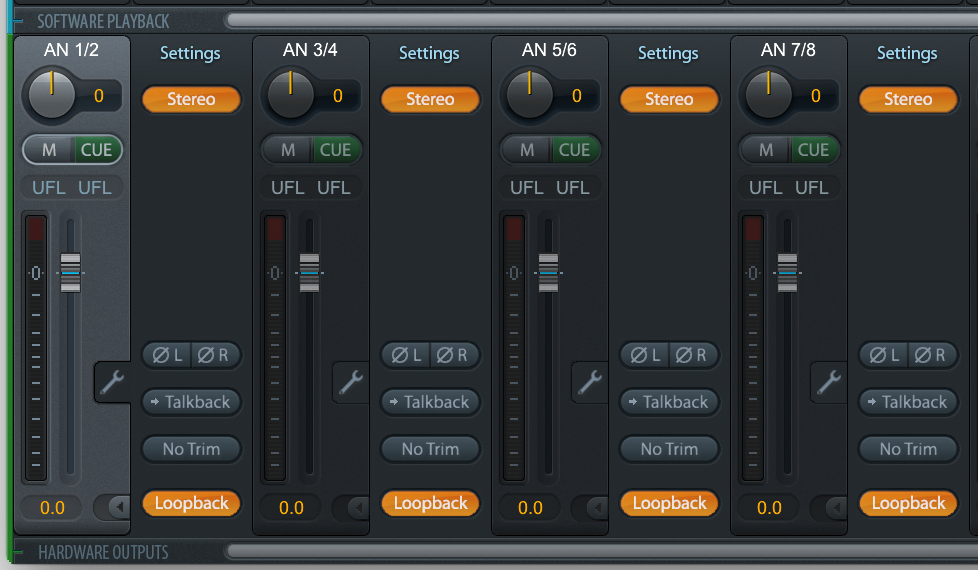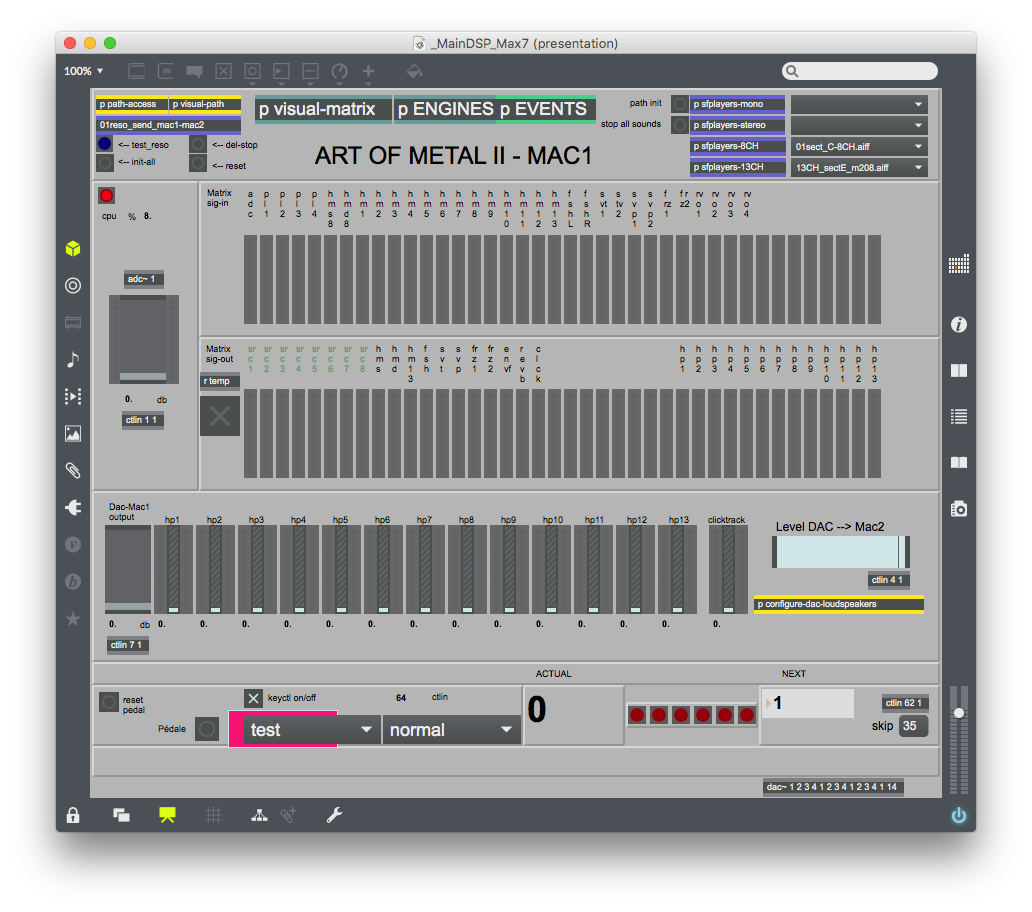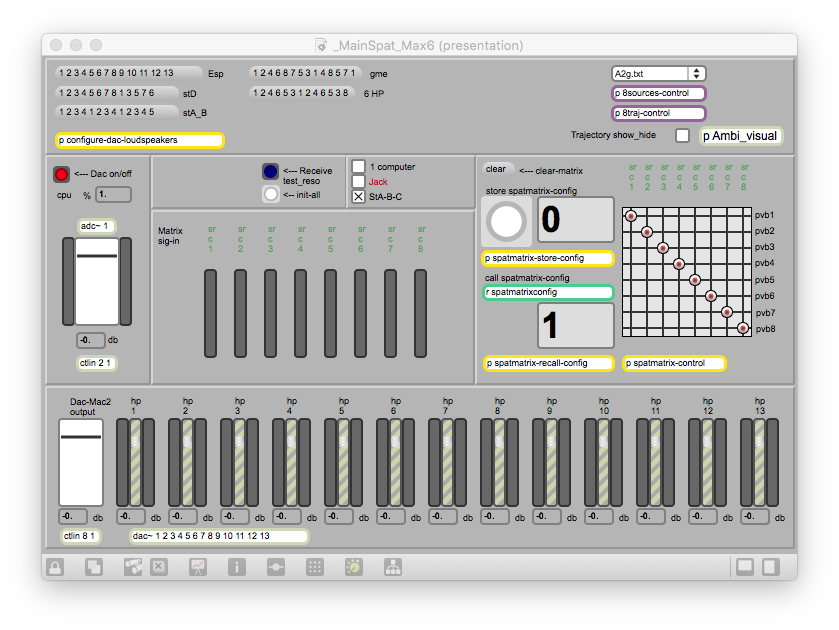Table of contents
Performance date: 17 mars 2017
Documentation date: 14 avril 2017
Version state
Valid
Validation date: 30 novembre 2017
Executions dates of this version
- 17 mars 2017,
Version documentalist
- blevy (Benjamin.Levy@ircam.fr)
Version realisation
- Benjamin Lévy (Computer Music Designer)
- Alain Billard (Performer)
- Emmanuelle Corbeau (Sound engineer)
- Nicolas Berteloot (Sound engineer)
Version length
6 mn 30 sUpgrade Motivation
Concert of the 40th anniversary of Ensemble InterContemporain.
Reduced version of the piece to last 6min maximum.
Convert the all-in-one folder to two Max projects (1 for Max 7 (effects), 1 for Max 6.1 (spatialization)).
Other version(s)
- Yann Robin - Art of Metal II - AOM2 Moscou
- Yann Robin - Art of Metal II - Max8_64b_Port
- Yann Robin - Art of Metal II - Vuitton
- Yann Robin - Art of Metal II - 40ans EIC (no cut)
- Yann Robin - Art of Metal II - AOM2 Lille-2016
- Yann Robin - Art of Metal II - venise 2013
- Yann Robin - Art of Metal II - Venise-2011
- Yann Robin - Art of Metal II - strassburg
- Yann Robin - Art of Metal II - transfert_mustica_ftp
Detailed staff
- clarinette contrebasse
Electronic equipment list
Computer Music Equipment
-
2 MacBook Pro - Apple Laptops
(Apple)
1 main, 1 spare (if main fails) -
1 Max 7 - Max
(Cycling74)
version 7.3.3 32bits -
1 Max 6 - Max
(Cycling74)
version 6.1 32bits -
2 Fireface 800 - Sound Board
(RME)
1 for the main computer , 1 for the spare computer -
1 footswitch control - MIDI Controllers
(MIDI Solution)
to convert the pedal to MIDI -
1 Footswitch / Sustain Pedal - Footswitch / Sustain Pedal
for the clarinetist to trigger the cues -
1 MIDI booster - Booster
to send the MIDI pedal to the back of the room (and split)
Audio Equipment
-
1 C414 - Condenser Microphones
(AKG)
"overhead" above the clarinet -
2 DPA 4021 - Condenser Microphones
(DPA)
on both sides of the instrument
Work related information
Premiere
- 2 octobre 2007, Paris, Ircam, Espace de projection, concert Cursus
Publisher :
- Jobert
Realisation
- Jean Lochard
- Yann Robin
Work length
- 11 mn
Useful links on Brahms
- Art of Metal II pour clarinette contrebasse métal et dispositif électronique (2007), 11mn
- Yann Robin
| File | Author(s) | Comment | |
|---|---|---|---|
| Download [10,3 Mio] | Simulation files Test files | A. Billard | audio files for testing |
| Download [732,9 Kio] | Patch Max 6 project | R. Meier - B. Levy | spatialization |
| Download [171,8 Mio] | Patch Max 7 project | R. Meier - B. Levy | transformations |
| Download [450,2 Kio] | Score Score | Y. Robin | Ed. Jobert |
| Download [1,2 Mio] | All-in-one ejies 3.2 | E. Jourdan | ejies 3.2 needed for Max 7 (compatible with Max 6) |
Instructions
IMPORTANT INFO
This version includes the AUDIO FILES with 8 CHANNELS ONLY. The original version includes sound files with 13 channels as well. If you need those, download a previous version of the piece!
Audio setup
Each of the computers has:
1 input channel: mix of the 3 microphones
4 output channel: 1 = Front Left, 2 = Front Right, 3 = Back Left, 4 = Back Right
Click is not used by Alain Billard (clarinet) who knows very well the piece.
Here is diagram of the overall audio and MIDI setup:

Loudspeaker setup
For this concert, we used 4 sets of speakers placed like a square around the audience : Front Left, Front Right, Back Left, Back Right
Midi setup
The clarinetist triggers the cues of the score/patch with a foot pedal sent in MIDI to the computer. When an analog footswitch or sustain pedal is used (as it was the case in this version) it needs to be converted to MIDI with a MIDI Solutions Footswitch Controller. If the console and computers are far away from the stage, a MIDI Booster is used to reinforce the MIDI transmission. It is used to duplicate the MIDI info for main and spare computers.
Software
This version is composed of two Max Projects:
one running on Max 7.3 32bits (transformations). File:
AoMII-Max7_proj.maxprojone running on Max 6.1 32bits (spatialization). File:
AoMII-Max6_proj.maxproj
8 channels are sent from Max 7 to Max 6. To do that, we use the loopback function of the RME Fireface. Below is a capture of this setup in the TotalMix software. Set unused channels of the Fireface to loopback to send thos channels from Max 7 to Max 6. You will have to adpat the routing in both Max Audio Setup to match the virtual input/output and the real input/output going to/from the console.

ejies objects and functions are required for the Max 7 project. Because of java(script) they could not be integrated directly into the project. You have to install them in your packages before opening the project. We used and provide ejies 3.2 in this version. You may update the ejies to the last version provided that it works with Max 7 32bits.
Except for the routing, no special Max setup is required for this piece. We use this standard setup :
I/O Vector Size: 512
Signal Vector Size: 256
Sampling Rate: 48000Hz
Scheduler in Overdrive: yes
in Audio Interrupt: no
System calibration and tests
The input level of both patches (Max 7 and Max 6) should be set rather high for the effects to work properly.
Two soundfiles can be used as a simulation to quickly test the patch without the clarinetist. CLCB-sectA_05-diff.aifis a recording of the first 28 bars of the piece. CLCB-sectB-37_49-diff.aif is a recording of the bars 37 to 49.
Initialization routine
When launching the two projects, you can check for errors in the Max window.
In Max 7 the following error can be ignored (should appear only once):
newobj • reverb-OPer_init: No such objectIn Max 6 the following errors can be ignored (should appear 8 times):
newobj | vbap-room-OPer_init: No such object `` | vbap: Configure loudspeakers first!
Once you have loaded both Max 6 & 7 projects:
Check the communication between the two Max with the blue
test_resobutton of Max 7 patch. The blue LEDReceive test_resoof the Max 6 patch should miror it.Start the audio on both Max with the red LED
Dac on/off. You can check that the CPU pourcentage near this LED is changing.Then
init-allwith the button of the Max 7 patch.Pass one or two cues with your right arrow key (->)
Then re
init-allwith the button of the Max 7 patch.Don’t forget to check the input faders of both Max patches. The Max 6 spatialization patch also need the clarinet input.
For the pedal of the performer to actually trigger the cues, the mode menu should be set to
useinstead oftest

Patch presentation
The Max 7 (transformations) main patch interface:

The Max 6 (spatialization) main patch interface:

Performance notes
For timing purposes, this version was played with a cut between cue 27 (bar 155) and cue 35 (bar 178). A shortcut (shown below) has been added to the main Max 7 patch for the computer music designer.
Once the performer has triggered and played cue 27 (which cuts off all the electronics), click on the 35 button shown below to prepare the cut. When the performer is ready to start again, he/she has to trigger cue 35 with the foot pedal.

In general, Yann Robin likes when the sound coming from the computer is loud in the room! Adjust the volume consequently!
The first sound of the electronics, triggered at the first note of the performer should be really impressive in the room, like a scream.
From cue 11, the electronics is much quiter then grow again progressively. Keep this as a rather long crescendo in the electronics, don’t push up the volume directly.
© IRCAM

This documentation is licensed under a Creative Commons Attribution-NonCommercial-NoDerivatives 4.0 International License.
Program note
_Art of métal II_, pour clarinette contrebasse métal et dispositif électronique en temps réel s’inscrit dans le cadre d’un cycle pour cet instrument et est le résultat d’une collaboration avec Alain Billard, clarinettiste et soliste de l’Ensemble intercontemporain. La [work:20852][première pièce du cycle], créée le 28 janvier dernier, confronte l’instrument à un ensemble de dix-sept musiciens, celle-ci à un dispositif électronique et la dernière, [work:20856][Art of métal III], en tant que synthèse, ralliera l’instrument à l’ensemble et à l’électronique. Elle sera créée en 2008\. Le fil d’Ariane de ce projet, l’idée conductrice, est une approche métaphorique de ce que peut inspirer le métal, cet alliage souvent synonyme de force, puissance, solidité, énergie, brillance, éclat etc. L’instrument lui-même est métallique dans son intégralité ; un bec en métal a spécialement été fabriqué pour l’occasion par Selmer pour remplacer celui qui est habituellement en ébonite. Outre la recherche de puissantes sonorités métalliques, l’autre préoccupation principale est le son que peut produire l’émission de la voix dans la clarinette contrebasse. Ce mixage engendre des perturbations et modifie considérablement le timbre de l’instrument. La voix est utilisée chantée ou bien criée. Ces cris, émis avec des sons fendus, amplifient la distorsion et la saturation du son, les timbres semblent éclater, exploser et produisent une violente énergie. Tout cela est accru par l’électronique, qui immerge l’auditeur à l’intérieur même du son grâce à un système de spatialisation permettant de modifier virtuellement les paramètres acoustiques d’une salle et donc d’en changer psychoacoustiquement la perception. D’autres outils de traitements développés à l’Ircam, donnant la possibilité de resynthétiser le son en temps réel, d’en extraire le « bruit » ou les transitoires d’attaques, ont apporté une précieuse contribution et enrichi considérablement l’univers sonore de ce projet.Yann Robin.
Version documentation creation date: 14 avril 2017 13:50, update date: 6 mai 2021 15:09